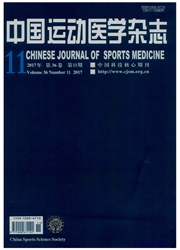

 中文摘要:
中文摘要:
目的:构建含有及不含有TAT的CAⅢ质粒表达载体,并进行诱导表达、纯化,在体外初步鉴定TAT-CAⅢ的跨膜转运功能。方法:采用PCR的方法扩增编码CAⅢ和TAT-CAⅢ全长的DNA序列,分别重组入pET28a质粒表达载体中,测序鉴定后转化大肠埃希菌BL21(DE3),构建重组体的表达菌株;IPTG诱导表达后,用Ni-NTA亲和层析柱分离纯化融合蛋白,纯化产物进行SDS-PAGE分析、Western blot鉴定及磷酸酶活性染色;然后分别以1μmol/L纯化的CAⅢ及TAT—CAⅢ孵育C2C12成肌细胞1h,间接免疫荧光法检测两者在细胞内的分布情况。结果及结论:成功地构建了含有及不含有TAT的CAⅢ质粒表达载体;转化大肠埃希菌BL21(DE3)后表达并纯化出相对分子量分别约32000(CAⅢ)和35000(TAT-CAⅢ的融合蛋白,Western blot和酶活性染色鉴定表明成功地获得了两种融合蛋白;间接免疫荧光染色显示,TAT-CAⅢ孵育组细胞内可见有较强的绿色荧光,而CAⅢ组细胞内则未见荧光,表明TAT可介导CAⅢ由胞外跨膜转导进入胞内。
 英文摘要:
英文摘要:
Objective To construct the carbonic anhydrase Ⅲ(CAⅢ) plasmid expression vectors with and without tyrosine aminotransferase(TAT), and then express and purify them, in order to verify the transmembrane ability of TAT-CAⅢ in vitro. Methods The CAⅢ and TAT-CAⅢ genes obtained from PCR were cloned into plasmid pET-28a and expressed in E. coll. BL21 (DE3). The transformants were induced by IPTG and the fusion proteins with His-tag were purified with a Ni-NTA-agarose column. The purified proteins were verified by means of SDS-PAGE, Western blot and phosphatase activity staining were applied subsequently. The C2C12 cells were treated with serum-free medium containing 1 μM TAT-CAⅢ or 1 μM CAⅢ respectively for 1 hour and the intracellular distributions of fusion proteins were observed by indirect immunofluorescence. Results and Conclusion The TAT-CAⅢ and CAⅢ plasmid expression vectors were successfully constructed. The fusion protein TAT-CAⅢ and CAⅢ were expressed and purified efficiently, and their relative molecular mass weighted about 35 000 and 32 000. TAT-CAⅢ in incubation group cells revealed strong green fluorescence, while no green fluorescence was seen in CAⅢ group, indicating that TAT could mediate CAⅢ transferring into cells efficiently.
 同期刊论文项目
同期刊论文项目
 同项目期刊论文
同项目期刊论文
 期刊信息
期刊信息
